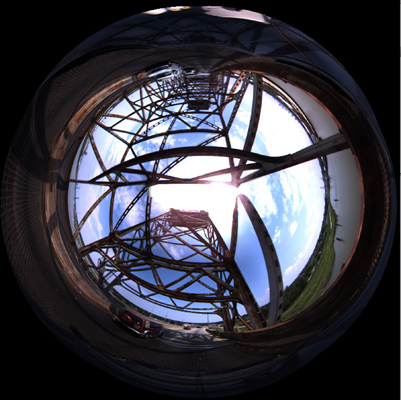Round Up: The Best of Prospect.2 New Orleans: Part 2

Joyce J. Scott's Black Blonde IV (left) and Inkisi #2 (right), both 2011, on view at Tulane University's Newcomb Art Gallery as part of Prospect.2 New Orleans. Courtesy the artist and Goya Contemporary, Baltimore.
Joyce J. Scott
Newcomb Art Gallery
Tulane University
October 22, 2011–January 29, 2012
As I moved through the Newcomb Art Gallery space at Tulane University on a recent visit, I came upon a group of giggling middle school girls surrounding a sculpture, Inkisi #2, whose base of colored blown-glass penises had brought them to a halt. Across the room, a few of their male and female classmates were transfixed in front of another sculpture—a glass gun containing real bullets pointed at a black female head made of seed beads and thread—evocatively titled Head Shot. When the group spontaneously began discussing violence against women, I realized how skillfully Baltimore-based artist Joyce J. Scott had pulled them into her work and enabled them to verbalize issues of sexuality and violence.
Scott works with materials and techniques that have traditionally been associated with women’s work and craft—fabric, beading, crochet, and weaving. She also employs found objects, monotint, and blown glass to tell a story with each piece without any regard for what is politically correct or discomforting. Using her own moral compass as a guide, Scott questions what it has meant, historically, to be a woman or to be black (or both) in America.
Scott’s work is both beautiful and intricate, but it can also be pretty funny at times and even more often gruesome. Her mastery of a variety of mediums, which she frequently combines in surprising ways, belies the directness of her approach, empowering even the most casual or untrained viewers, such as the kids from Haynes Academy I observed, to look at highly-charged issues straight-on.
—Beryl Johns

Still from Pawel Wojtasik's 360° panoramic video Below Sea Level, 2009/11, on view at Delgado Community College's Isaac Delgado Fine Arts Gallery as part of Prospect.2 New Orleans. Courtesy the artist and Priska C. Juschka Fine Arts, New York.
Pawel Wojtasik
Isaac Delgado Fine Arts Gallery
Delgado Community College
October 22, 2011–January 29, 2012
Usually the works in biennials have nothing to do with the cities hosting them. Below Sea Level, a 360° panoramic video installation by Pawel Wojtasik at the Isaac Delgado Fine Arts Gallery, is an exception. Undoubtedly, New Orleans is special. Its curious culture begs intimate investigation, while its acute vulnerability supplicates careful documentation.
Wojtasik fell prey to the city on both counts like succumbing to a siren, when in 2000, a cross-country trip brought him into the throes of Mardi Gras. He immediately made efforts to move from New York and find gallery representation in the city, but was unsuccessful. Seven years later, an opportunity to collaborate with friend and composer Sebastian Currier on a New Orleans-themed work brought him back, evolving into Below Sea Level. Wojtasik states that the idea for the video seemed to open doors—the battered region continued to fight for survival and locals welcomed these witnesses to their ongoing plight. Arriving in New Orleans with one phone number, he left with many.
MASS MoCA produced the work for their 2009 exhibition “These Days: Elegies for Modern Times” and Wojtasik’s team grew to include the museum’s curator Denise Markonish and creative/technical consultant Gian Pablo Villamil. Stephen Vitiello matched a soundtrack to the piece, which amalgamated filmic pans of the shotgun architecture of New Orleans’ neighborhoods; the fan-boat dotted landscape of bayou country; the iconic barges of Mississippi River industry; and the vibrant populations, both human and wildlife, that inhabit these niches.
To witness this love letter to the region, the viewer moves from the entrance of the gallery into a makeshift circular chamber suggesting the concavity of the region’s natural landscape. Videos projected along the chamber’s walls push into view and recede. Fishbowl-like tondos expand, widening and flattening into multiple perspectives of the urban and rural southeastern Louisiana landscape, positioning the viewer at the nexus of these communities. Like the region itself, there is no way to experience the whole at once. It is in constant flux and Wojtasik continues to add recent footage. He leaves viewers with a mutable poetic statement of his temporary stay, envisioned with captivating grace that continually calls the viewer to return.
—Kathy Rodriguez



